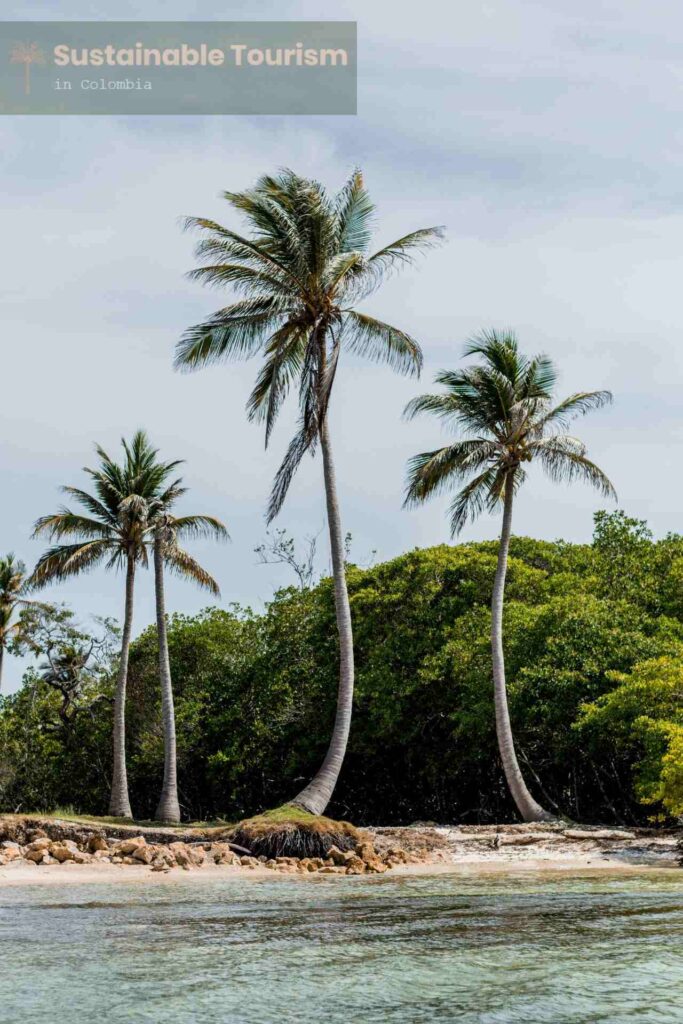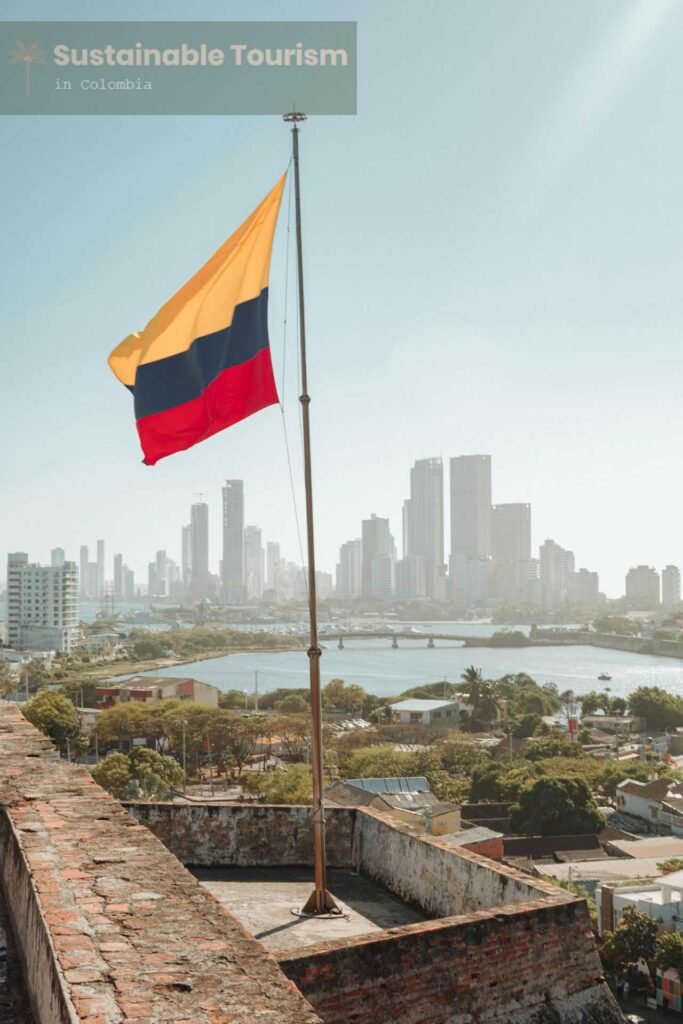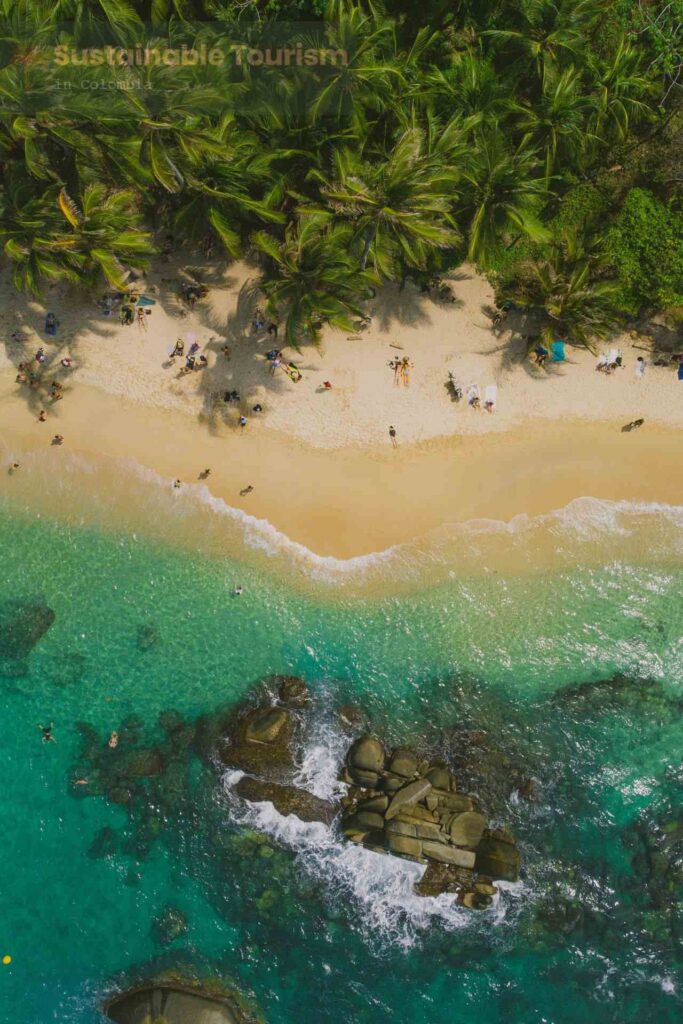Stretching along the northern coast of Colombia, the Caribbean region is a breathtaking paradise known for its pristine beaches, vibrant culture, and diverse ecosystems.
This region is not only a prime destination for travelers seeking tropical adventures but also an area rich in history, biodiversity, and indigenous heritage.

Table of Contents
ToggleGeography of the Colombian Caribbean
The Caribbean region covers seven departments: Atlántico, Bolívar, Magdalena, Cesar, Córdoba, Sucre, and La Guajira. This vast territory boasts stunning beaches, tropical rainforests, vast savannas, and the majestic Sierra Nevada de Santa Marta—the world’s highest coastal mountain range.
Its warm climate, year-round sunshine, and breathtaking landscapes make it a top destination for tourism and ecological exploration.
Hydrological Wonders
The region is blessed with significant rivers, swamps, and coastal lagoons. The Magdalena River, the most important in Colombia, flows into the Caribbean Sea, shaping the region’s economy and ecosystems. Other notable water bodies include the Ciénaga Grande de Santa Marta, a crucial wetland home to diverse wildlife, and the Guajira Peninsula, where desert landscapes meet the turquoise sea.
National Parks in the Caribbean Region
This region is home to some of Colombia’s most stunning protected natural areas, including:
- Tayrona National Natural Park – A spectacular combination of jungle, mountains, and Caribbean beaches.
- Sierra Nevada de Santa Marta National Park – The world’s highest coastal mountain range, home to glaciers, waterfalls, and sacred indigenous sites.
- Los Flamencos Fauna and Flora Sanctuary – A birdwatcher’s paradise, home to pink flamingos and other exotic species.
- Corales del Rosario y de San Bernardo National Park – A marine sanctuary preserving Colombia’s coral reefs and marine life.
- Macuira National Natural Park – A unique oasis in the desert of La Guajira.
Biodiversity: Home of the Cotton-Top Tamarin
The Caribbean region is home to an astonishing variety of wildlife, from marine species to exotic jungle creatures. One of its most iconic inhabitants is the Cotton-Top Tamarin, a small primate found primarily in northern Colombia. This critically endangered species is distinguished by its striking white crest and playful nature, making it an important symbol of conservation efforts in the region.
The coral reefs in the Caribbean waters are also rich in marine life, hosting sea turtles, colorful fish, and even dolphins. Meanwhile, the mangrove ecosystems provide a sanctuary for countless bird species, reptiles, and amphibians.
Indigenous Communities and Local Culture
The Caribbean region is not only rich in biodiversity but also in cultural heritage. Indigenous groups such as the Wayuu, Kogui, Arhuaco, and Wiwa continue to preserve their traditions, languages, and ancestral knowledge. The Wayuu people, for instance, are known for their colorful woven bags (mochilas) and their deep connection to the desert landscapes of La Guajira.
Beyond the indigenous communities, the region’s Afro-Caribbean heritage is reflected in its music, dance, and cuisine, blending African, Indigenous, and Spanish influences.
Tourist Attractions: A Journey Through History and Nature
The Caribbean region offers a unique blend of colonial history, tropical beaches, and lively cities. Some must-visit destinations include:
- Cartagena de Indias – A UNESCO World Heritage city with stunning colonial architecture, fortresses, and vibrant nightlife.
- Santa Marta & Tayrona Park – A perfect mix of beaches, mountains, and indigenous history.
- La Guajira – A dramatic desert landscape where sand dunes meet the sea.
- San Andrés & Providencia – A paradise with crystal-clear waters, coral reefs, and the famous “Sea of Seven Colors”.
- Barranquilla – Home of Colombia’s biggest carnival, a UNESCO-recognized festival of music and dance.

A Culinary Experience Like No Other
Colombian Caribbean cuisine is a fusion of flavors influenced by African, Indigenous, and Spanish traditions. Some must-try dishes include:
- Arepa de huevo – A deep-fried corn arepa filled with egg.
- Cazuela de mariscos – A rich seafood stew made with coconut milk.
- Arroz con coco y pescado frito – Coconut rice paired with freshly fried fish.
- Bollo de yuca o mazorca – A delicious corn-based side dish.
Where to Stay in the Caribbean Region
The Caribbean offers accommodation options for every traveler, from luxury resorts in Cartagena to eco-lodges in Tayrona and hostels for backpackers along the coast. Sustainable tourism initiatives also allow visitors to stay in indigenous communities and experience their culture firsthand.
Experience the Magic of the Colombian Caribbean
Whether you’re looking for adventure, relaxation, history, or culture, the Colombian Caribbean region has it all. Swim in the turquoise waters, explore lush rainforests, walk through colonial streets, and immerse yourself in the vibrant rhythms of cumbia and vallenato.
📍 Plan your trip today and discover the magic of the Colombian Caribbean!

Read more!
We have amazing places to let you know, read more about beauty Colombia!
- iBocca Dental Clinic: Excellence in Dental Tourism in Colombia
- Exploring the Andean Region of Colombia: A Land of Mountains, Culture, and Diversity
- Discover the Colombian Amazon: A Natural Wonder 🌿🐆
- El Cocuy National Natural Park: Colombia’s Snow-Capped Paradise


Recent Comments